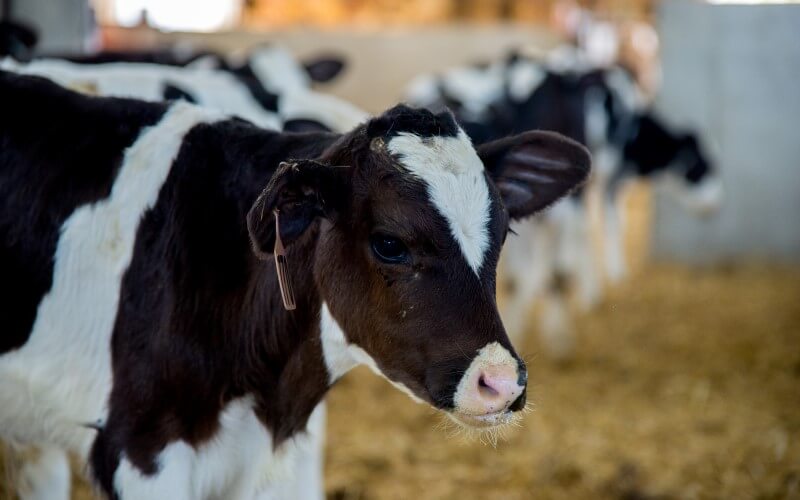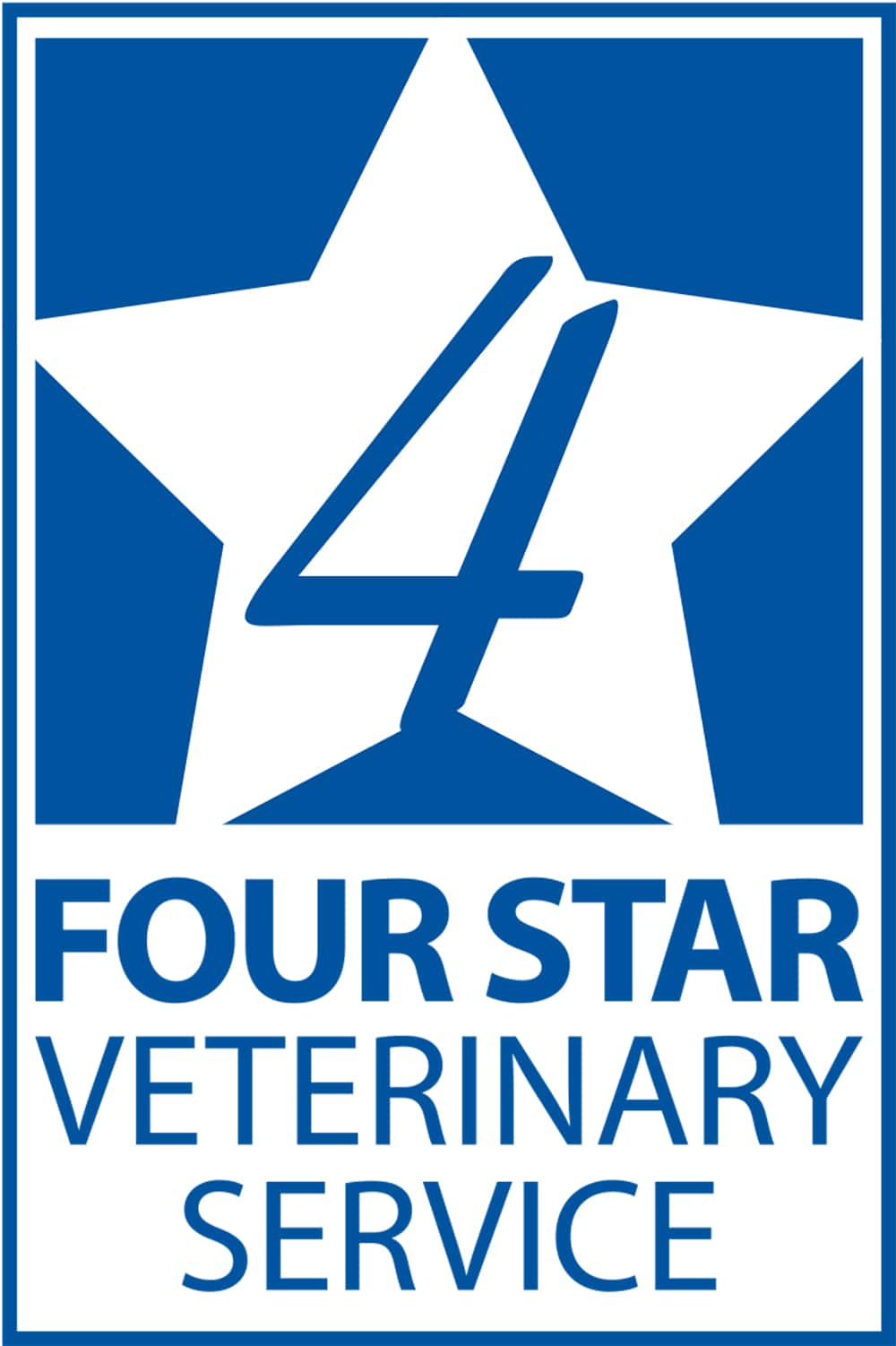
By Brad Schmitt, DVM, Four Star Veterinary Service, LLC
Where there are dairies, there will undoubtedly be bull calves. It’s what we make of those calves that differentiates progressive dairy farmers from the rest. In the past, bull calves were seen as an inevitable byproduct of the dairying process, but that ideology has since evolved. Dairy bulls now go on to be reared for either high quality veal or “dairy beef,” which there is great consumer demand.
To ensure that this demand continues, we need to remain vigilant in producing a safe and healthy product that consumers can trust. This requires health maintenance from birth to harvest, as well as judicious use of antibiotics in order to maintain consumer confidence.
Maintaining health
Whether a heifer or bull, the calf is contributing to our food supply and should be given every possible opportunity to thrive. From the time the calf hits the ground, to when it leaves the dairy farm is arguably the most critical period in terms of setting that calf up for a lifetime of health and productivity. Regardless of sex, calves should be treated with identical husbandry practices. Vaccination strategies will vary, but basic husbandry needs to be the same. Here are a few non-negotiables:
-
- Colostrum
Timely colostrum intake is crucial for immune development, as calves are born with naïve immune systems. Unless administering oral vaccines at birth, colostrum or quality colostrum replacer needs to be the first thing that enters the stomach. A good rule of thumb is to feed at least 2 quarts by 2 hours of age, followed by another 2 quarts by 6 hours. This allows for adequate absorption of maternal antibodies, which will protect the calf in the short term and set the stage for long-term immunity. Ensuring early colostrum intake prevents Failure of Passive Transfer of Immunity (FPTI), thereby greatly reducing treatments, morbidity, and mortality after leaving the dairy.
-
- Navel care
It’s important that navels are dipped shortly after birth, creating a barrier between the umbilicus and any environmental pathogens. Use of a 7% iodine tincture or chlorhexidine/alcohol product disinfects the navel and accelerates drying of the cord to prevent future infection; don’t hesitate to repeat this action if necessary. By dipping, rather than spraying, we avoid the “shadowing effect” and make certain that the entire navel is coated. Proper navel care effectively reduces the incidence of septicemia, septic arthritis, and umbilical hernias.
-
- Suitable environment
The first week of life is stressful enough without having to battle the elements. Minimizing environmental stress by providing a warm, dry place for the calf to lay goes a long way towards health and welfare. Shade, bedding, wind blocks, etc. should be strategically used for both heifers and bulls. Keep in mind that the thermoneutral zone for a newborn calf is between 55-70 oF; any variance from this, and they’re expending valuable energy to heat or cool themselves. Two areas of focus are bedding and ventilation management. By maintaining clean, dry bedding, navel infections are greatly reduced and significantly less body heat is lost through conduction. Appropriate ventilation directly affects respiratory health; by getting down to the calf’s level, we can determine if air exchange and ammonia levels are within acceptable limits.
Maintaining consumer confidence
It will come as no surprise that plant-based protein has continued to gain market share in recent years. The Good Food Institute has cited a yearly increase in plant-based “meat” sales of about 18% since 2017. As more options become available to consumers, we in the animal agriculture industry must continue working to instill confidence in our rearing practices and final meat products. This boils down to upholding welfare standards and avoiding drug residues, two topics that should not be taken lightly.
-
- Welfare
If you see something, say something. The vast majority of producers take excellent care of their animals, practicing proper welfare with pride. Unfortunately, a few bad apples remain and give the industry a black eye from time to time. When willful acts of abuse or neglect are detected, it’s important that we address them immediately to prevent future incidents.
See it? Stop it! is a resource to share with your employees. To confidentially report concerns, call the See it? Stop it! hotline at 833-207-7457 or email: info@seeitstopit.org.
-
- Drug residues
Labeling meat as “Antibiotic-Free” and “No Antibiotics Ever” has become a popular marketing tool because it conveys a sense of safety to the consumer. We in the animal agriculture industry know well that all meat going into the food supply is free of appreciable amounts of antibiotics, as long as appropriate withdrawal times are observed. Alarmingly, drug residues are still commonly detected in cull dairy cows and bob veal, as referenced by the 2019 USDA National Residue Program. It’s our responsibility to prevent drug residues, so that we may continue using these valuable tools in the future.
The United States FDA outlines a T.A.L.K. method for preventing drug residues.
T: Talk with your veterinarian before giving any drug to your animals.
A: Ask if the drug is FDA-approved for use in food-producing animals. Extra-label drug use should only occur under the order of a veterinarian, who is responsible for establishing an appropriate withdrawal time.
L: Look at the label. Know the drug you are giving and the approved dosage regimen. This includes dose, frequency, duration, and route of administration.
K: Keep complete treatment records. It’s important to know which animals were treated, what drug was used, dosage regimen, why they were treated, and when the specified withdrawal time allows those animals to be harvested.
These basic health and welfare routines are required by both Veal Quality Assurance (VQA) and Beef Quality Assurance and are expected of every producer. Proper care and attention early in the calf’s life is vital for success after leaving the dairy, whether it goes on to become a replacement heifer, dairy beef, or veal. By producing healthy animals in a responsible manner, we can continue to secure our place in the protein market.
The Healthy Veal Calves Start at the Dairy on Day 1 infographic is available by clicking here.
More information on dairy calf care and VQA resources are available on www.VealFarm.com
This article, Bull Calves: Maintaining Health and Consumer Confidence, is provided as part of the Veal quality Assurance Program outreach efforts funded by the Beef Checkoff.

